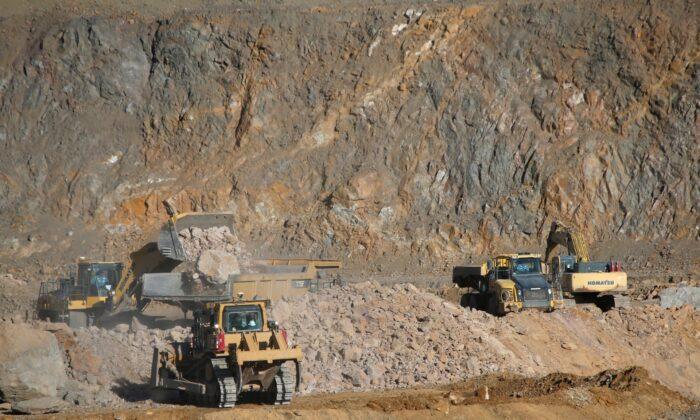What emerged as a potential weapon the Chinese regime could employ during the heights of the trade tensions with the Trump administration appears to have more teeth now as reports of looking into restricting exports of rare-earth elements and their refining technology have surfaced. China accounts for over 60 percent of global production and Canada could suffer if it also became a target for any cutbacks on exports.
“We are, in many respects, beholden to China for a number of these rare-earths products, and the impacts of not being able to access them could be both direct and indirect,” Brendan Marshall, vice president for economic and northern affairs with the Mining Association of Canada (MAC), told The Epoch Times.
Rare earths are 17 metals that aren’t actually rare, but typically occur in ore deposits in concentrations too low to be mined efficiently. Many modern products depend on them as key inputs, like cellphones, computers, medical devices, and electric vehicles. Rare earths are also used in F-35 fighter jets.
China is the hub for the technology used in refining and purifying the raw materials, and Chinese officials view that as a more powerful weapon for protecting Beijing’s interests than the actual minerals, according to Bloomberg.
Canada has been identified as part of the solution to unlock the sticky situation allied democracies face with China. Canada has 40–50 percent of the world’s known rare-earth reserves, but it is not currently mining any.
Marshall, an expert in critical minerals, said progress is ongoing between Canada and the United States following the memorandum of understanding signed in December 2019 on a joint action plan to develop a North American supply chain and break up China’s stranglehold on rare earths.
He says Canada has a significant opportunity to be a reliable supplier of these minerals both in raw form and in value-added manufacturing for its allies.
“There’s a recognition of our own domestic vulnerability and the benefits of being able to support supply in greater volume of these minerals within our own borders,” Marshall said.
As things currently stand, Marshall says it’s not viable in Canada to develop rare-earth deposits without the appropriate supports and outlets in place. Government support is needed at all points on the value chain until it can operate independently.
“We need tools that will allow these projects to move forward,” Marshall said.
You have to prove you can produce what the customer wants, said Donald S. Bubar, president and CEO of Avalon Advanced Minerals Inc., in his testimony at the parliamentary Standing Committee on Natural Resources on Feb. 22.
“On the rare-earth side, I think there’s still a role the federal government could play here, creating some more of these demonstration-scale pilot facilities for aspiring new producers to get access to be able to prove their processes,” he said.
The lack of refining capacity in Canada relates to the culture of the mining industry in that it has typically focused on making the concentrates and shipping them elsewhere for value added, Bubar said.
“It’s never been a part of the culture, [within] the industry in Canada, to create the value added. It’s still a learning curve for everyone to climb on,” he added.
Pegging China Back
China plays by a different set of rules—environmental, labour, and safety—and Jamie Deith, CEO of Eagle Graphite Corp., hopes Canada’s allies could ensure greater accountability for those factors.
“Basically levelling the playing field to China that lacks regulatory structure [while turning it] into a cost advantage at the expense of our own industry,” he told parliamentarians.
Bubar suggested that the feds create a stockpile of critical minerals similar to what the United States has done. This way, Canada could attract some manufacturing businesses and help develop downstream capabilities, and that China used this strategy to justify investment in mining and processing facilities, he noted.
“China’s been way ahead of us on this all along recognizing that they have to build out the downstream to justify the development of the upstream side,” Bubar said.
Janice Zinck, director of Green Mining Innovation Processing at Natural Resources Canada (NRCan), said on an “Ask NRCan” podcast that there’s a lack of supply of rare earths and that some countries have already started stockpiling them.
“Many jurisdictions such as the U.S., the European Union, and Japan have declared the rare earths as a critical element—ones that require protection and in need of more of a strategic approach in terms of securing that supply,” she said.
NRCan and Saskatchewan released a joint statement on Feb. 22 announcing the establishment of a task team that is developing a critical minerals inventory “to build an integrated, all-Canadian critical minerals and battery value chain.”






Friends Read Free